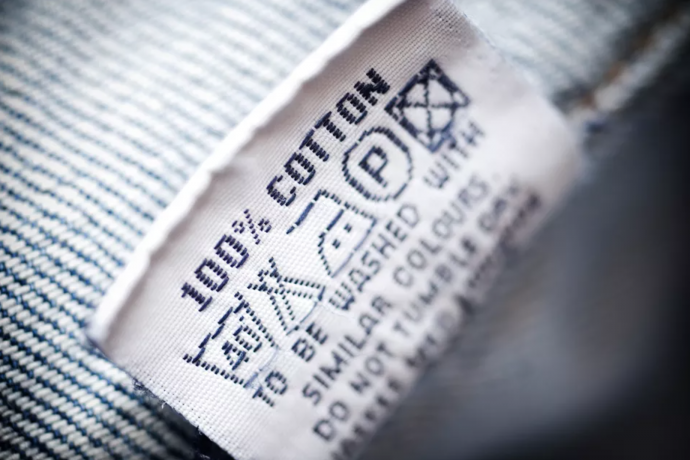How to Wash Different Fabrics: Guides & Advice
Doing the laundry is not a difficult task. However, when you bring up the ‘Do’s and ‘Do Not’s revolving around the proper washing methods of various fabrics—things may get a little confusing. As a general rule, always follow the temperature and wash program selection instructions on the care label to keep your clothes in tiptop condition. But what to do, if the label is cut off or got lost? Check out some useful washing tips for different fabrics.
Cotton
One of the most common and durable fibres around, cotton is absorbent and strong, so garments can be washed in the machine with any detergent, and bleach can be used as needed.
For best results, machine wash cotton items in warm water on a normal cycle.
Tumble dry on low setting.
If your cotton is white, you can wash it with bleach on a hot water setting.
When you want to keep cotton towels, robes, and washcloths fluffy, use half the amount of detergent and run them through an extra rinse cycle (detergent residue can diminish softness).
Cotton wrinkles easily but can be ironed on the highest heat level.
Silk
While dry-cleaning is fine for basic silk pieces, it’s even better to hand wash them in order to keep them in good shape.
Handwash silk in cool or lukewarm water using a tiny bit of mild detergent such as Woolite, Ivory soap, or shampoo dissolved in water.
Like most natural fibers, silk doesn’t tolerate changes in temperature, so stick with either cool or warm water the whole way through.
Never wring out silk to dry! Instead, just roll the item up in a towel and gently press the water out.
Wash items labeled “washable silk” (underwear, tank tops, etc) in the washing machine on the gentle cycle in a mesh bag. Hang dry on a padded hanger.
To prevent color loss and to keep silk in good condition, add up to three tablespoons of white vinegar for every two quarts of water.
Silk should be pressed while it’s still damp. Iron on a low setting and don’t use steam, which can leave watermarks.
Always store silk in a dry dark place, and never keep in it in plastic since the fabric needs to breathe.
Linen
Despite common belief, linen actually fares better when washed by hand or in the machine than with dry cleaning, and it becomes softer with each washing. Linen is best washed in tepid or cold, and preferably soft, water.
Gentle wash cycles and super-mild soaps are best for linen.
Feel free to pop your linen clothing into the dryer on low, but take them out when still slightly damp: Over drying can make the fabric stiff.
Lay flat or hang to dry. Thin linen wrinkles fairly easily which adds to its look, but if your pieces are insanely creased, iron on low while the clothes are still damp.
Cashmere
Cashmere makes for some of the softest, finest, most comfortable scarfs and sweaters you'll ever experience. Because cashmere sweaters are such a luxury, some people are afraid to ruin them, and always send them out to the dry cleaners. It's actually not that complicated to clean them yourself. You can usually clean them on the delicate or wool cycle of your washer, as long as you place them in a mesh lingerie bag. To hand wash a cashmere sweater, use cold water and one of the products made to wash wool and cashmere. Soak for a half hour, then rinse, but don't wring.
Tip: I always wash my favorite cashmere clothes in cold water with a couple of cupfuls of baby shampoo.
Polyester
Most polyester and can be easily machine washed and dried in warm water, with added fabric softener because polyester is prone to static cling. Certain poly-blends need to be dry-cleaned, so always check the tag.
Dry the garment on a low temperature and use a moderately warm iron if needed.
Polyester is easy to care for, but locks stain. To life a stain, rub stain remover on the area and allow it to sit for 10 to 20 minutes before laundering.
If the stained garment is white, consider soaking the fabric for 24 hours in a gallon of water and 1/3 cup of automatic dishwashing soap before throwing it in the machine.
Viscose
Viscose has a silky appearance and feel, it breathes like cotton, can be easily draped, and it’s lightweight. However, it wrinkles very easily, so it’s advised to use an iron’s medium setting with steam.
If the garment is particularly special or has intricate draping, handwashing is suggested in cool to lukewarm water.
Hang wet items totally wet (no wringing or twisting!) as this will help remove creasing and ensure the garment doesn’t lose its shape.
Wool
Wool has several great properties including being stain, dirt, and wrinkle-resistant, and also acts an insulator to keep its wearer warm. Pure wool apparels can be very expensive, so be sure to treat them with extra care at all times. How to wash: dry-clean, handwash in cold water with wool detergent or use the wool program.
Give your clothes a long and happy life with the proper fabric care. Hope these simple laundry tips will help to make your favorite clothes look their best for longer. Share your favorite tips in comments!


Great advice. I also turn t-shirts that have any kind of decoration, words, etc. on them inside out for both wash and especially dry. It helps keep the designs looking better for longer.